Every year I try to go to one or two new photographic destinations but mostly I return to places I have been to before. This might seem strange to some but the fact is that the more times you return to a location and the more familiar you become with its landscape and wildlife, the better your photos will become.
There are certain places that I see myself returning to year after year for as long as I am able to travel and as long as the ecosystems of these destinations remain intact. For me, these places are almost like a drug; their appeal is so strong that they keep pulling you back. The Masai Mara in Kenya is one such area. Another is Midway Atoll, at the end of the Hawaiian Island chain.
In early March I made my fourth trip to this magical avian paradise along with 13 other photographers. Jointly leading the trip was the legendary bird photographer, Artie Morris. While Artie is probably the world’s foremost bird photographer, he is also hands down the greatest teacher of photographic techniques and post production processes (i.e. photoshop). It would be fair to say that 80%+ of all the photographic technique that I have acquired has been picked up from Artie’s publications. Along with fellow photoshop guru, Robert O’Toole, nearly 100% of what I know about post production processes has come from these two. Anyone with any interest in improving their photography, irrespective of whether they have a nature photography leaning, needs to get their hands on the following publications: “The Art of Bird Photography,” by Arthur Morris; “Digital Basics,” by Arthur Morris (both available from his web site www.birdsasart.com); “Advanced Photoshop Techniques and Tips Simplified (APTATS 1 & 2),” by Robert O’Toole (also available from www.birdsasart.com).
Being 1,250 miles from Honolulu and more than a third of the way to Japan, Midway is right out in the middle of nowhere and getting there remains a challenge with no commercial jets servicing the atoll. This means you have to take a 4.5 hour chartered flight to get there.
Midway is best known for its decisive naval sea battle in World War 2. Up to the late 1990s, the US Navy maintained a sizeable naval/air presence on the main island. They have since left and transferred control and maintenance of the atoll to the US Fish & Wildlife Service.
Today, Midway’s major attraction is its huge bird population, crammed onto three islands within the atoll – Sand Island (1.8 miles long and 1.2 miles wide), Eastern Island (about half the size of Sand Island) and tiny Spit Island (just a few hundred meters long). Seventeen seabird species, numbering nearly two million birds, nest on the atoll each year. This creates a density of birds of almost unimaginable proportions. It is hard to go more than a foot or two without encountering one of our feathered friends. Bicycling and driving around the island (in golf carts) involve a constant meandering pattern in order to avoid running over the birds. Meanwhile there are almost as many birds filling the skies especially when any sort of wind gets up. On two occasions including this latest trip, I have been hit by glancing blows from flying albatrosses while cycling on my bike. Luckily neither the birds nor this writer were hurt.
By far and away the most visible of the birds on the atoll is the Laysan Albatross. Between November and July, Midway is home to almost half a million breeding pairs of this species, or 75% of the global population. Add in chicks and fledgling, non-breeding birds and the total Laysan count rises to almost 1.5m. The birds mate for life, live more than 50 years and return to the same area each year to lay their eggs and raise a single chick. The chicks hatch in January and February and fledge in June/July. The fledglings spend up to 5 years at sea – an incredible period to be away from terrestrial land but as I have noted in my previous Midway trip report, the Albatross has switchblade like wings which can be locked into position turning it into a perfect gliding machine. Indeed, an albatross expends more energy sitting on an egg than in the air. Even more staggering is that a 50 year old Albatross will have flown, at a minimum, 3.7m miles.
The other visible species of Albatross on Midway is the Black-footed Albatross with some 25,000 breeding pairs representing 35% of the world’s breeding population and the largest colony in the world. In this image a parent can be seen standing over its chick with an abandoned egg in the foreground.
The birds are so attractive that I repeatedly have to restrain myself from shooting portrait shots of their heads against pretty backgrounds (I have well and truly done these shots to death over the course of my visits) and challenge myself to try and shoot something different. This is one such shot as is the second image which shows rain droplets on the Laysan’s feathers.
As you can see from the pictures, the Albatrosses and indeed most of the birds on Midway are ridiculously tame. If you sit or lie down, at least a few of the Albatrosses will come right up to you, often nibbling on your shoe laces. When you can get so close to the birds it seems almost criminal not to make extensive use of a wide-angled lens.
In the early morning, the Laysans spill out of the woods and head down to Midway’s beaches. Lining the top of many of the beaches are native Naupaka shrubs. Interspersed between these are clear paths of sand which the birds use as runways. The Laysans, while among the smaller of the Albatross species, still weigh more than 7 pounds and have a wingspan of nearly 7ft. As such they cannot fly from a standing start and like an airplane, require an accelerated burst of speed along the ground before they attain sufficient lift to become airborne.
One of the features of the Albatross population that is hard to miss on Midway is their courtship dance. The dance takes many years to master before it can be applied to woo a mate and non-mated birds can be seen practicing the synchronized duet frequently. At times almost comical, each bird rises up and down on its webbed feet, periodically thrusting its neck and bill into the air and vocalizing loudly. This is then followed by a repeated clacking and shaking of their bills together.
On this trip, I spent many hours observing the dance and attempting to take close up shots of the birds as their bills came together. I say attempt because the dance happens at a furious pace with the heads and necks in constant motion making it extremely difficult to lock focus.
In addition to these two albatross species, 2-4 rare Short-Tailed Albatrosses have been residing on Midway in recent years. Only around 1,200 of these beautiful birds remain in the world today. This photo is from last year’s trip when we had the good fortune to photograph one flying over Eastern Island.
As nightfall descends on Midway, some 70,000 Bonin Petrels fly in from the ocean to overnight on the islands. On my upcoming return trip to Midway, I plan to get out at night to try and capture some images of this attractive little bird.
One species that is impossible to ignore on Midway and which remains my personal favorite is the White Tern. On numerous occasions while I was either out walking or cycling, up to five or six of these birds would suddenly appear and hover for a prolonged period just a few feet above my head. I probably spent more time photographing White Terns on this trip than I did Albatrosses and I think I managed to get some very pleasing images.
Of the hundreds of White Tern images that I made, the following is probably my favourite. Taken at a focal length of 28mm with a touch of off-camera fill flash, it shows two Terns hovering while further overhead a Red Footed Booby and five Laysan Albatrosses cruise by.
Coming a close second is an image similar to one that I took last year. In fact it is almost identical insofar as it is the same tree (Ironwood or more specifically a Casuarina tree) with the nesting Tern in a similar position. I am not entirely happy with the position of the bird and would have preferred it a little higher up in the frame. Hopefully, I will have the chance to improve on the composition when I return to Midway next week.
February and March marks the peak season for the acrobatic courtship dance of the Red-Tailed Tropic Bird which on Midway numbers around 5,000 breeding pairs. This is an absolutely beautiful bird and photographs particularly well in the mid-day sun against Midway’s deep blue skies with their undersides lit up by the white sandy beaches which act as giant reflectors.
Over on Eastern Island, a 10 minute boat ride from Sand Island, there are a number of bird species that are not found on the latter. Chief amongst these are 90 pairs of Great Frigate birds plus a similar number of juveniles. Here two juveniles can be seen playfully snapping at one another in flight. However, they do have a darker side to them and on occasion can be seen harassing other bird species into giving up food that they have collected from the ocean.
Another species found only on Eastern Island is the Red Tailed Booby. This one can be seen carrying nesting material .
Unlike last year, I managed no decent images of the rare Laysan Duck but I did get to photograph an attractive shorebird species that I had not encountered before: a Bristle-Thighed Curlew.
In contrast to the days of film, digital allows you to experiment away at no extra cost and with so many birds in the air, it would have been amiss not to attempt some blur pictures of flying birds (i.e. panning using a slow shutter speed). Generally, these kinds of pictures work best against some sort of defined background (e.g. sea) as opposed to a featureless sky. In the early morning, before the sun has come up or on cloudy mornings, I like to manually adjust the white balance setting to around 3,500 kelvin to cool down the colour to an attractive shade of blue. This is similar to the colours that you used to get at this time of the day when shooting film.
It is important to experiment with different shutter speeds. The previous image was shot at ¼ of second, while this next picture is at 1/80th.
From previous blogs you will have gathered that I am not a big fan of photographing in large groups and one of the attractive features of Midway is that one is free to roam the island in pretty much complete isolation. I probably missed out on some of Artie’s wise words, although I did spend a full morning with him on one day, but I would generally prefer the solitude of just me and the birds (feathered that is) set against Midway’s stunning backdrop. Towards the end of the trip, while the rest of the group were in the mess hall, and I was on a deserted beach, save for hundreds of birds, a rainbow of majestic proportions appeared over the lagoon. Here a Laysan Albatross heads out on its lonely journey to forage far out into the northern Pacific, briefly gliding past the sweep of the multi-coloured rainbow. To properly bring out the rainbow’s colours, you always need to use a polarizing filter.
Such is the pull of Midway on me, that I am headed back for another trip tomorrow. For Paveena, it will be her first trip and I am just as excited for her as I am myself.
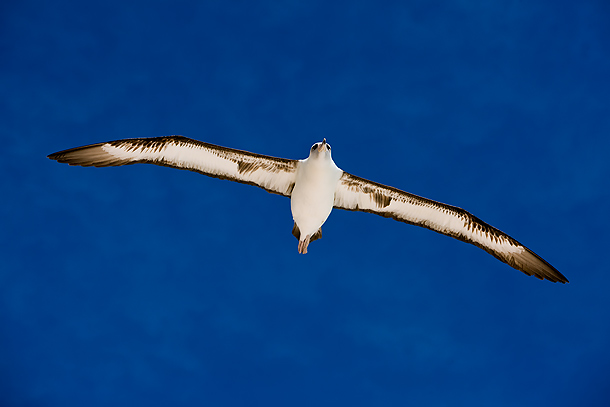
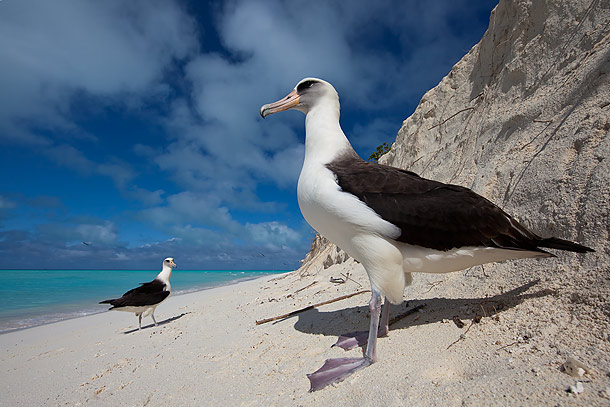
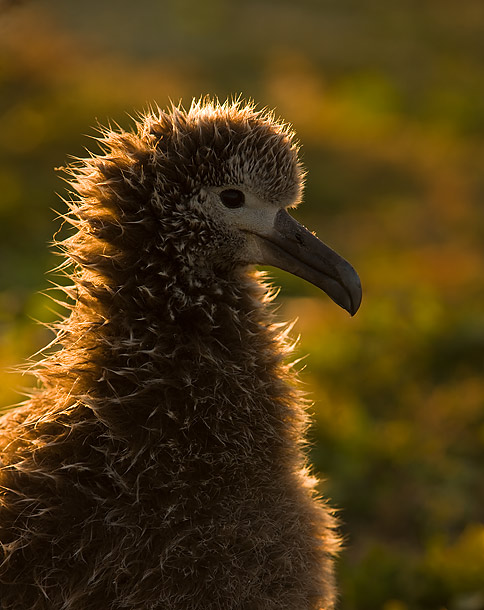
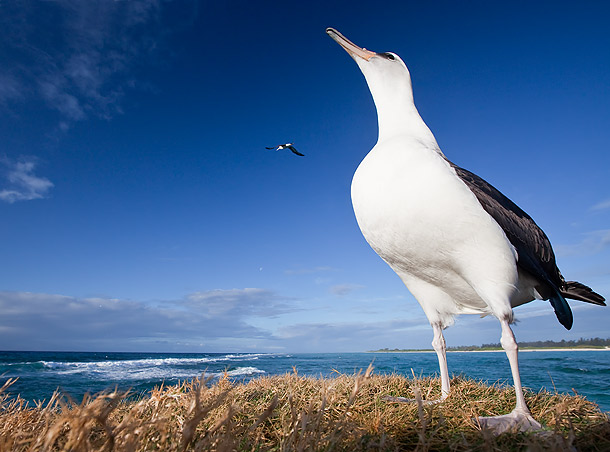
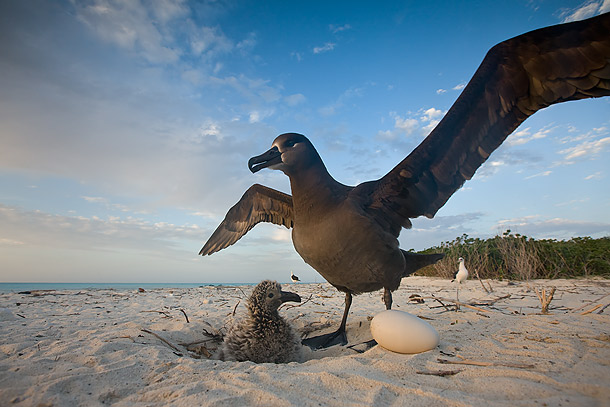
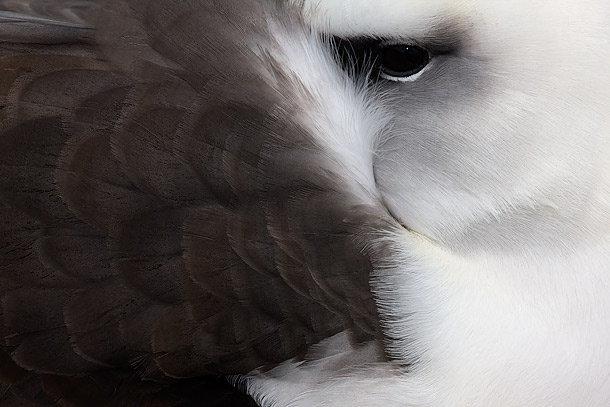
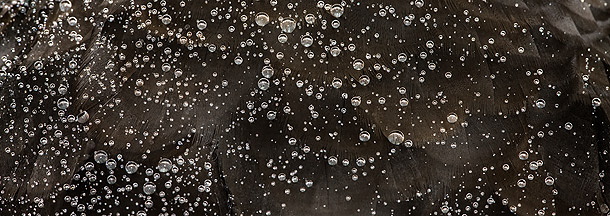
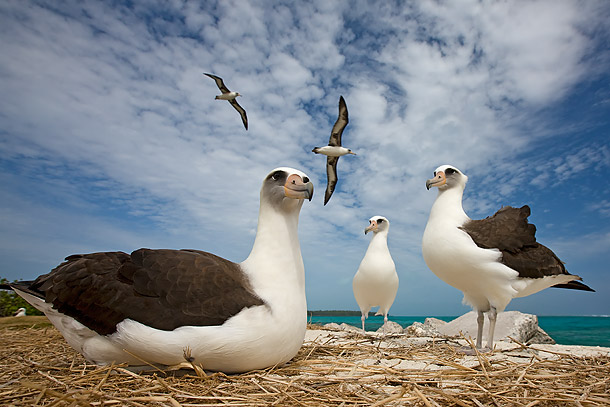
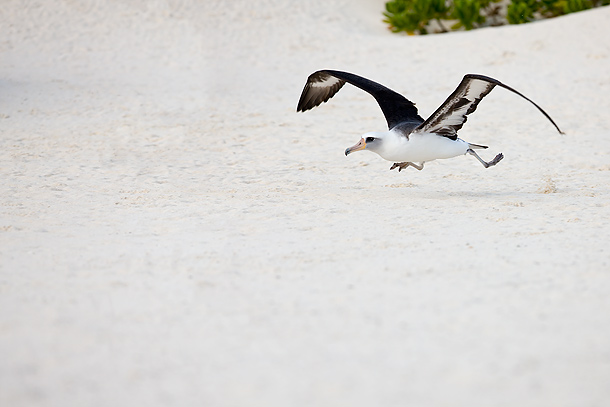
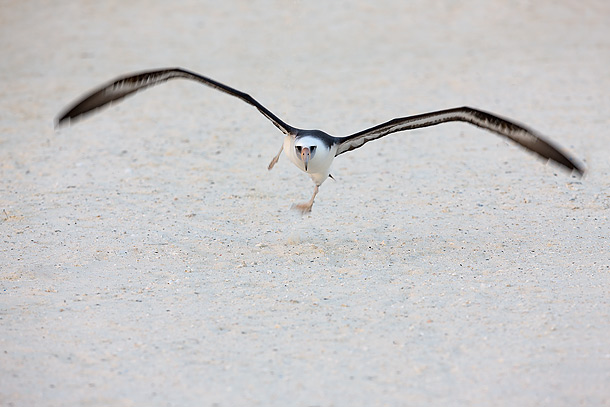
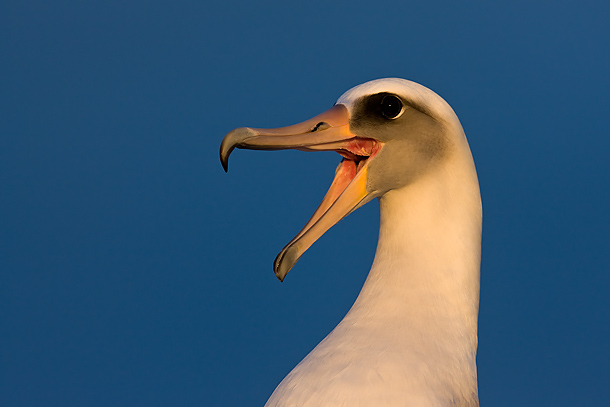
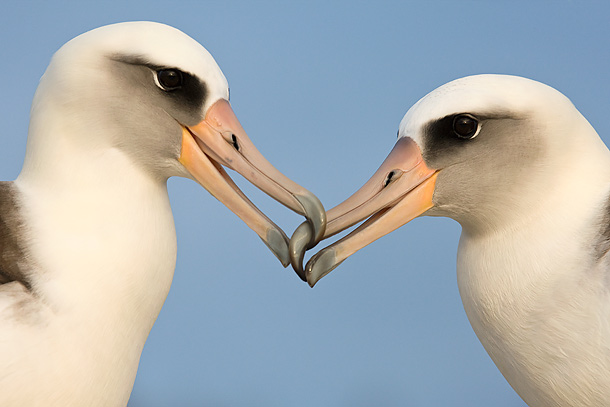
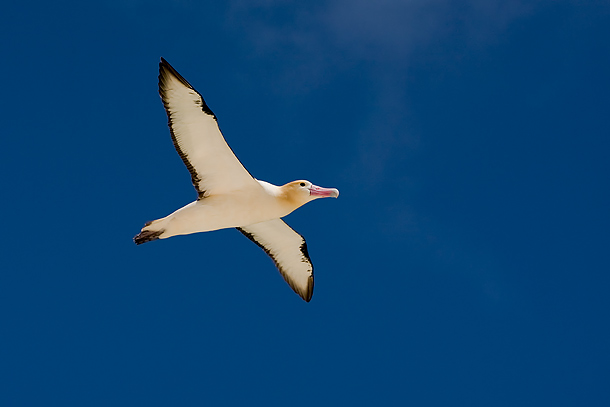
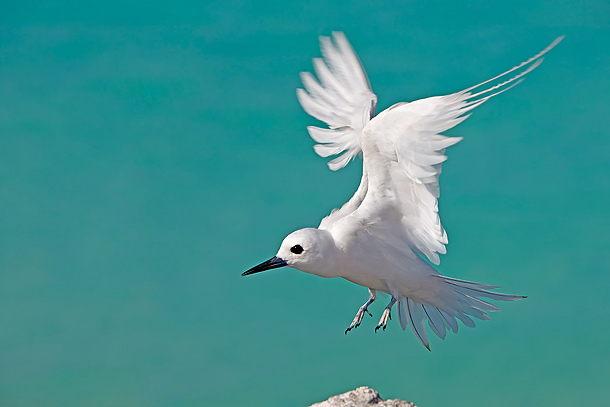
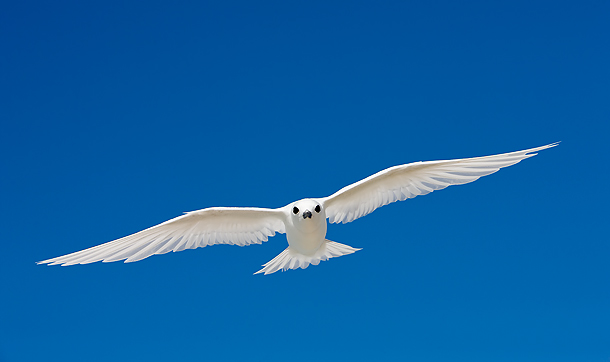
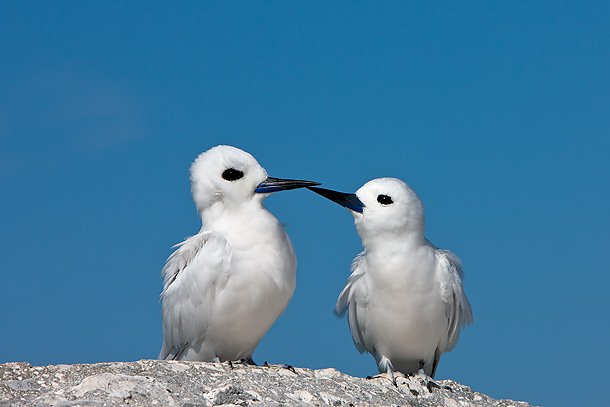
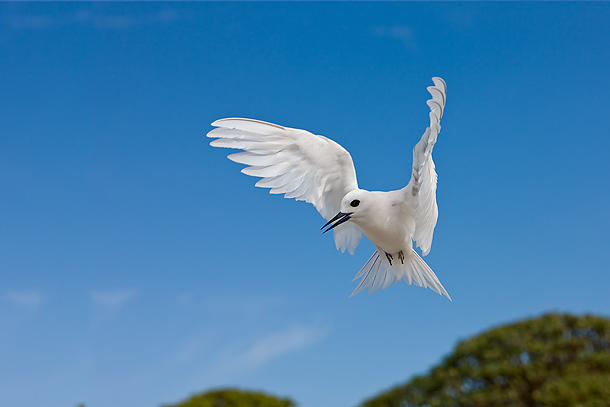
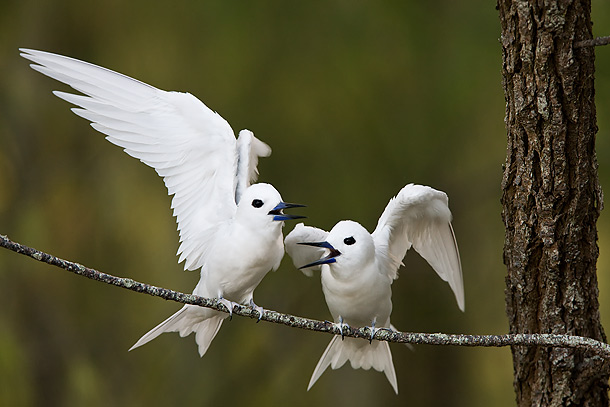
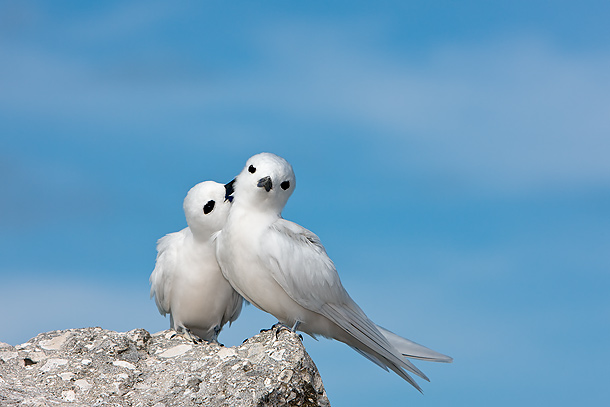
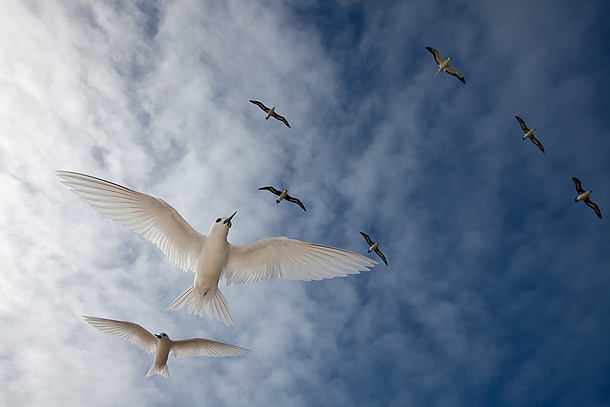
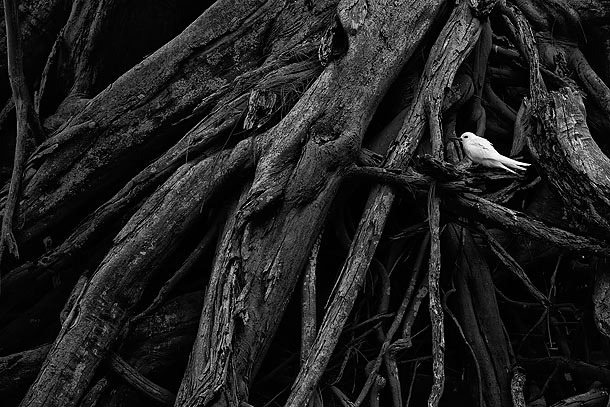
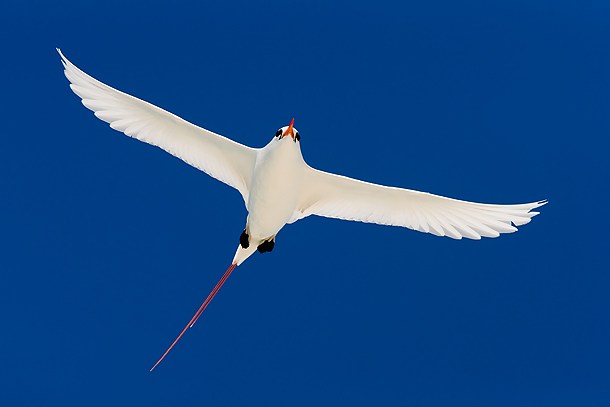
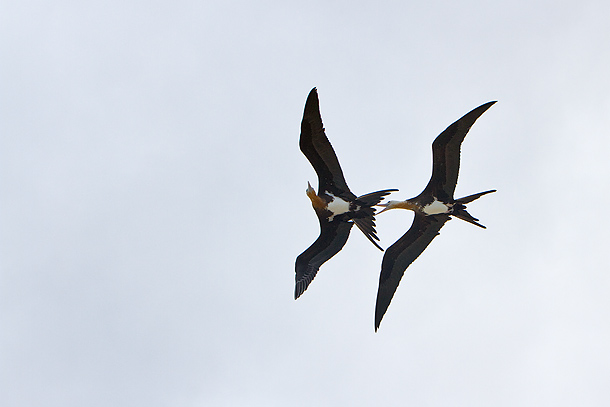
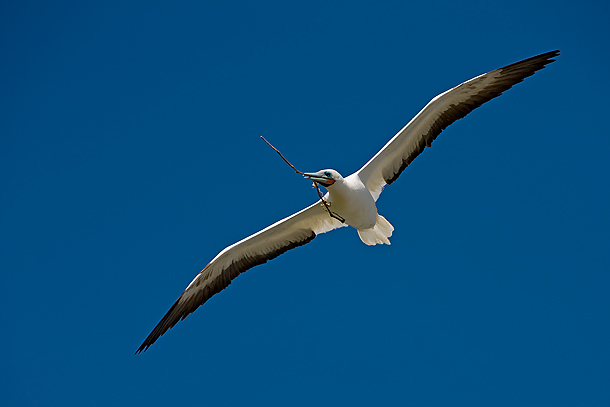
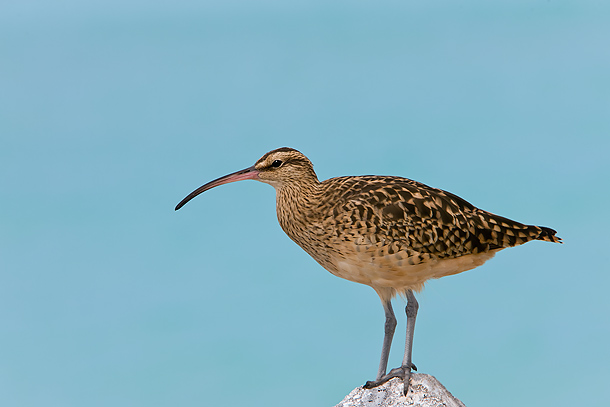
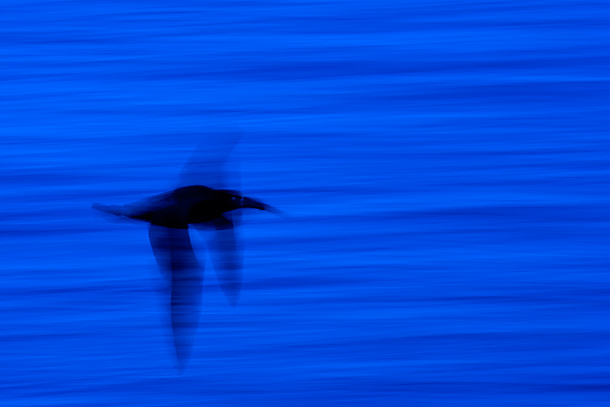
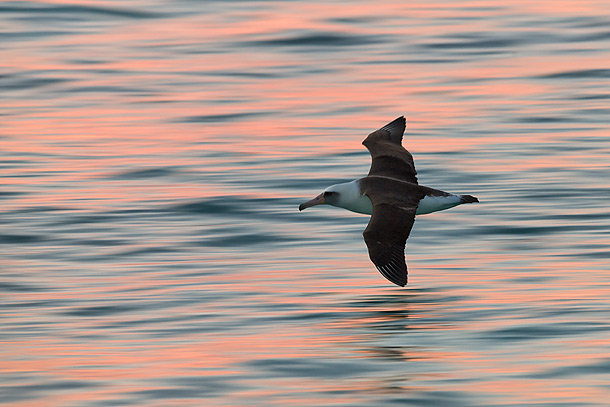
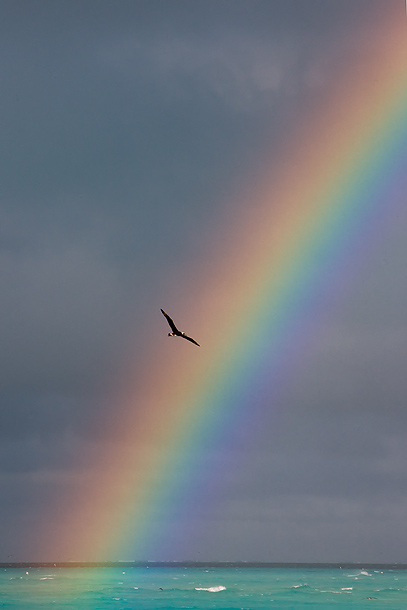
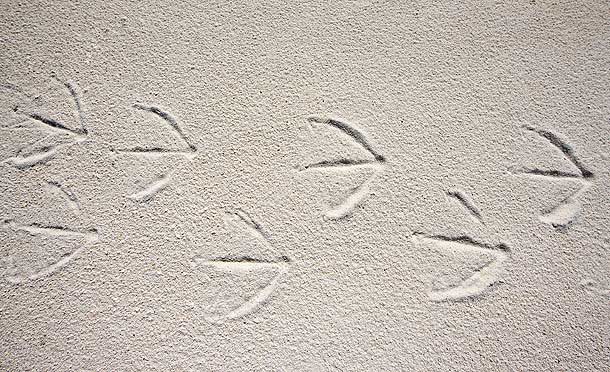
Arthur Morris
April 1, 2010
Hey Paul, Thanks for your kind words. I tremendously enjoyed both your writing and your images. Have a great trip. I am sure that your wife will fall in love with the place. Good luck with the tern and tropicbird chicks! Later and love, artie
Yan Vercshueren
April 1, 2010
These are against fantastic, amazing pictures. Real wildencounters. It is a witness of a true professional, passionate photographer who works till perfection
M.A. Longshore
April 1, 2010
Thank you, Paul.
Kevin Williams
April 1, 2010
Absolutely mind-blowing imagery. Wow. Congratulations!
Peter Kes
April 1, 2010
Thanks Paul for including me in your list. Great images and nicely narrated.
Ron Horn
April 1, 2010
Terrific images Paul. You are a real artist. I would love to get back to Midway someday. Have a great trip — I know your wife will be thrilled.
Kerry
April 2, 2010
Such stunning images and interesting writing. You have certainly inspired me to add this place to my wish list of places to visit. I hope you have a wonderful trip.
Gordon Lindsay
April 2, 2010
Thank you for sharing these amazing images and your commentary, at least I get to visit at secondhand, have a good trip I look forward to your pictures.
grace
April 6, 2010
Incredible. i actually have an aversion for birds — these are amazing images.
Larry
June 16, 2010
I just found your site, amazing. I was stationed on Midway from 1978-1979 and have searched since then to re-capture the beauty of the place. You have done that. great photographs, I will revisit often. Thanks for publishing these.
Abi
November 5, 2012
These are so beautiful!
If possible, I’d like permission to use one of these images as the cover image for a story I’m writing? http://www.wildencounters.net/weblog/wp-content/uploads/2010/03/Short-Tailed-Albatross-in-flight-Midway-Atoll-Hawaii_L9B1721-J.jpg
Thanks!
Paul Mckenzie
November 13, 2012
Hi Abi,
Am happy to let you use the image for a fee. Please contact me at paul@wildencounters.net. Thx, Paul
Simone Allard
April 21, 2014
This is a truly impressive photographic portfolio. I enjoyed it immensely! Keep up the great work!!